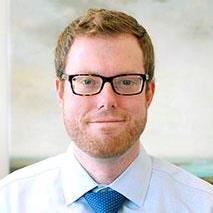There are many remedies for cancer-related fatigue — including exercise, massage, and acupuncture — but patients in Colorado have easy access to one of the most effective: natural sunlight.
Sunlight is one of the most effective sources of bright white light therapy, which helps to reset the body’s natural clock, says University of Colorado Cancer Center member Benjamin Brewer, PsyD, who studies the effects of bright white light therapy on cancer-related fatigue.
“It’s easy in Colorado, because I can just tell people to get access to sunlight within the first two hours after they wake up,” says Brewer, associate professor of hematology, at the CU Department of Medicine. “We want them to get at least a half-hour dose of bright white light per day.”
Cancer-related fatigue is driven by many factors, including schedule disruption, treatment side effects, and stress. Brewer works closely with CU Cancer Center member Catherine Jankowski, PhD, chair of the National Comprehensive Cancer Network’s Panel for Cancer-Related Fatigue, who oversaw new guidelines for the condition that were released in October 2023.
Hacking circadian rhythms
Bright white light therapy works on special sensors in the eyes that connect directly to the brain and restore natural circadian rhythms, Brewer explains.
“There’s a special part of our brain called the suprachiasmatic nucleus, which is like the master clock for the body,” he says. “And there are these things called zeitgebers, which is a two-part German word that means ‘time giver.’ A time giver is anything that sets that clock. What happens during cancer treatment is that patients get dysregulated. They get up early for hospital appointments, they get stuck in the hospital, we give them chemo, they don’t feel good, they don’t go outside, they don’t get light exposure. And light is the most powerful zeitgeber. Light therapy works by realigning people with the natural world, which we all need.”
Brewer is a psychologist who works to support patients with blood cancers. When issues around fatigue arise, he looks at an individual’s lifestyle and whether they are a “day person” or a “night person” — a trait known scientifically as a chronotype.
“I look at their routine: What time do you get out of bed? When do you go to bed?” he says. “People have a natural chronotype. But with cancer, you're not living by your old chronotype; you’re living by a new chronotype. Cancer-related fatigue is a huge problem, and it’s not just during chemotherapy. It’s something that can last for a decade after treatment for lymphoma, and it’s life limiting.”
Three steps to better sleep
People in other parts of the country often use special light boxes or LED glasses for bright white light therapy, but we are fortunate in Colorado to have 300 days of sunshine a year, Brewer says. To stay in a healthy circadian rhythm, he recommends at least 30 minutes of exposure to sunlight within two hours of waking. He also counsels patients on “dark therapy” — turning off screens and devices before bedtime, and in some cases dimming lights at least an hour before.
“When I develop a daily routine with somebody, there’s a 3-2-1 rule that I really like,” he says. “I tell people to stop eating three hours before bedtime, stop working two hours before bedtime, and stop screens and light about an hour before bedtime. You could read a book in dim light, but you don’t want all your lights on.”
Winning combination
Along with Jankowski, Brewer recently applied for a grant to study a combination of bright white light therapy with exercise and sleep modifications that appears to restore cancer patients to their pre-treatment circadian rhythms.
“We want to set them back on that natural circadian rhythm. Exercise is a way to do it. That’s a proven intervention for fatigue by itself,” he says. “There are proven interventions for sleep improvement. I’m not doing anything super experimental, but I’m combining them and using them as zeitgebers. I have found that when people do this, their fatigue does seem to improve after a few weeks. So we want to test it and see. As far as I can tell, nobody else has thought to try to combine these things that work for fatigue into one intervention that’s lined up with circadian alignment.”




